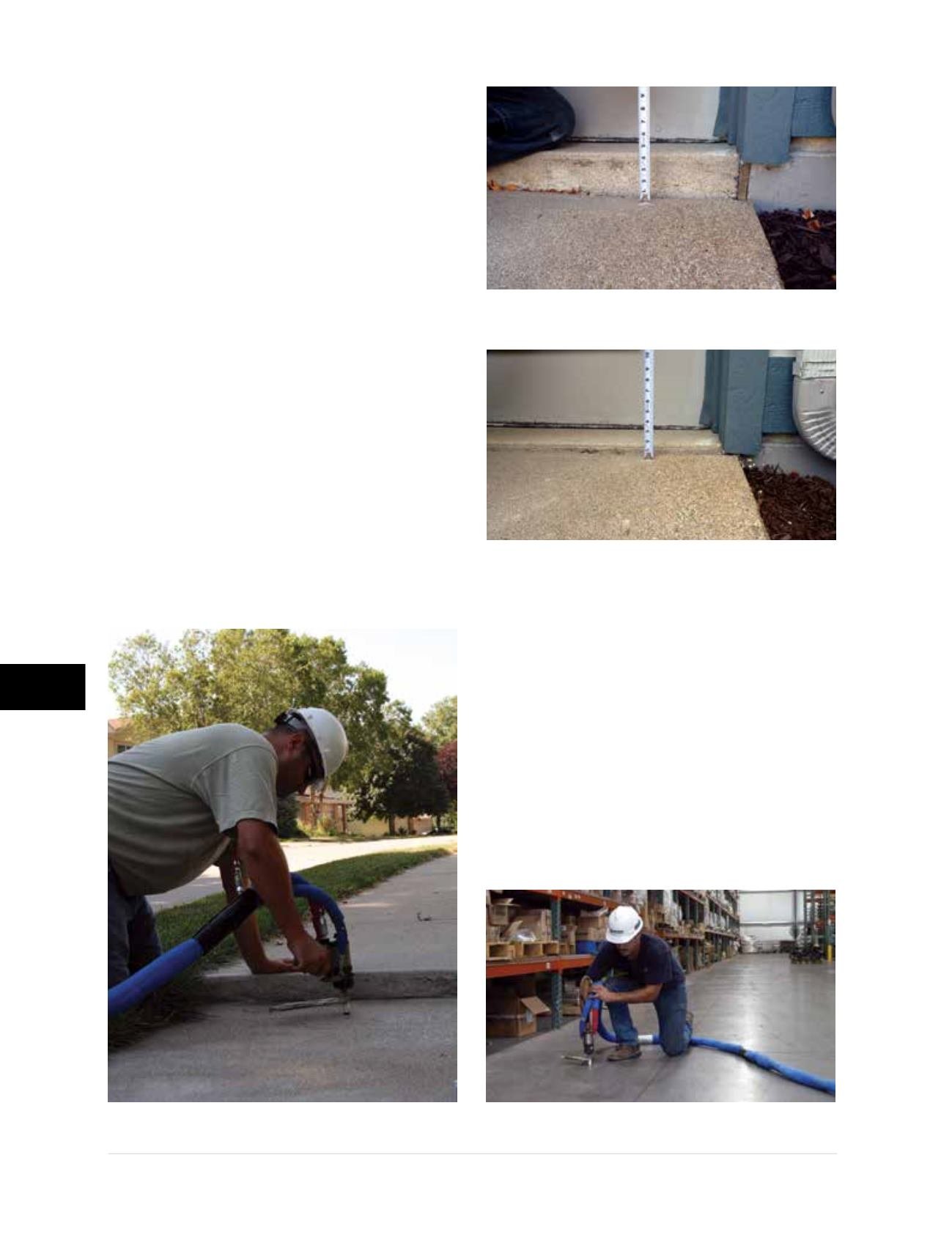

© 2014 Foundation Supportworks
®
,
Inc.
All Rights Reserved
p 334
Chapter 5
PolyLEVEL
®
Polyurethane Foam and Resin
CHAPTER 5
POLYLEVEL
®
POLYURETHANE FOAM AND RESIN
5.2 Applications
PolyLEVEL expanding foams are most often
used beneath exterior concrete sidewalk and
pavement sections for stabilization or re-
leveling, but are also utilized for interior work
and other specialty applications. PolyLEVEL is
often considered as an alternative to mudjacking
or removal and replacement.
In
residential
applications, PolyLEVEL foam
is used to stabilize, lift and re-level sidewalks
(Figure 5.2.a)
, patios, driveways
(Figures 5.2.b1
and 5.2.b2)
, garages slabs, and slab-on-grade
concrete floors. Concrete decks surrounding
swimming pools also often settle over time due
to poor compaction of fill soils, soil consolidation/
densification, and erosion. These repairs can often
be completed in a matter of hours with immediate
results, less mess, and no “wait time” for typical
use of the areas. When the work is done, all the
concrete sections will still match and not take on
the appearance of a checker board, as is the case
with typical removal and replacement.
Commercial/industrial
applications include
similar types of projects as residential, but
also include areas and facilities with heavier
use pavements. More common PolyLEVEL
applications include re-support of concrete
pavement at and around loading docks, and
concrete floor slabs within warehouses
(Figure
5.2.c)
, plants and manufacturing facilities.
Heavy wheel loads from semi-tractor trailers and
from fork trucks within buildings can overstress
subgrade soils and lead to pavement/slab
cracking, settlement and faulted sections.
Figure 5.2.a
PolyLEVEL foam injected to
re-level faulted sidewalk sections
Figure 5.2.c
PolyLEVEL stabilizes warehouse floor slab
Figure 5.2.b1
Before: Driveway settled
up to 4 inches relative to garage slab
Figure 5.2.b2
After: Driveway lifted
back to near original elevation












